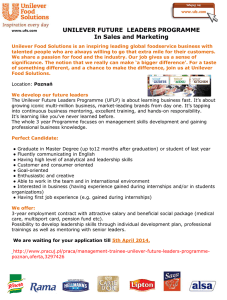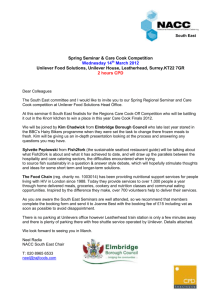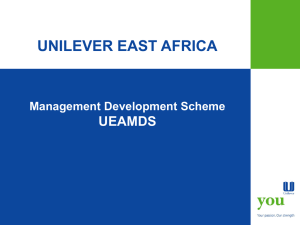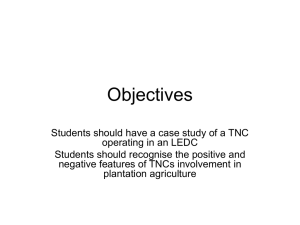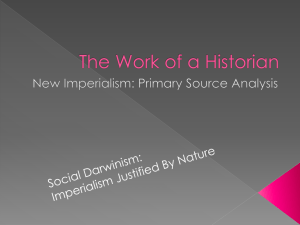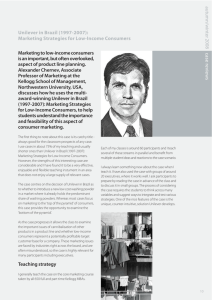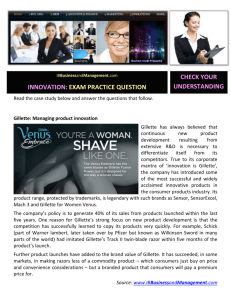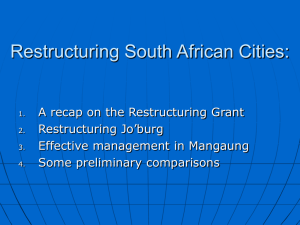FMCG Business Strategy: Adapting to Market Changes
advertisement
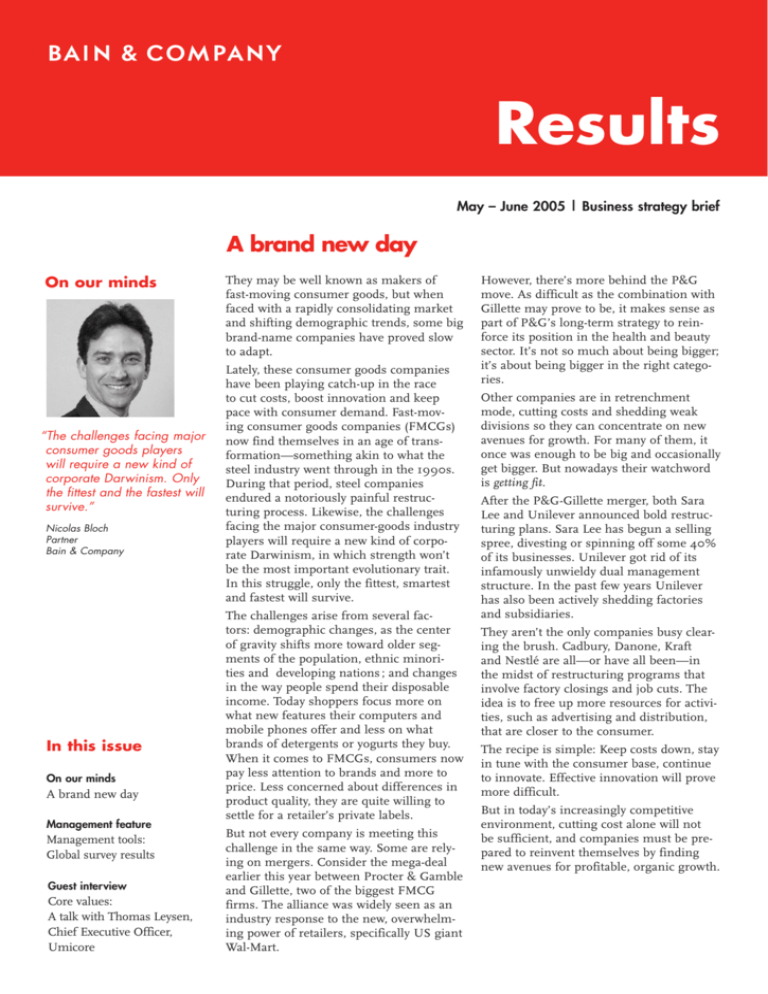
Results May – June 2005 | Business strategy brief A brand new day On our minds “The challenges facing major consumer goods players will require a new kind of corporate Darwinism. Only the fittest and the fastest will survive.” Nicolas Bloch Partner Bain & Company In this issue On our minds A brand new day Management feature Management tools: Global survey results Guest interview Core values: A talk with Thomas Leysen, Chief Executive Officer, Umicore They may be well known as makers of fast-moving consumer goods, but when faced with a rapidly consolidating market and shifting demographic trends, some big brand-name companies have proved slow to adapt. Lately, these consumer goods companies have been playing catch-up in the race to cut costs, boost innovation and keep pace with consumer demand. Fast-moving consumer goods companies (FMCGs) now find themselves in an age of transformation—something akin to what the steel industry went through in the 1990s. During that period, steel companies endured a notoriously painful restructuring process. Likewise, the challenges facing the major consumer-goods industry players will require a new kind of corporate Darwinism, in which strength won’t be the most important evolutionary trait. In this struggle, only the fittest, smartest and fastest will survive. The challenges arise from several factors: demographic changes, as the center of gravity shifts more toward older segments of the population, ethnic minorities and developing nations ; and changes in the way people spend their disposable income. Today shoppers focus more on what new features their computers and mobile phones offer and less on what brands of detergents or yogurts they buy. When it comes to FMCGs, consumers now pay less attention to brands and more to price. Less concerned about differences in product quality, they are quite willing to settle for a retailer’s private labels. But not every company is meeting this challenge in the same way. Some are relying on mergers. Consider the mega-deal earlier this year between Procter & Gamble and Gillette, two of the biggest FMCG firms. The alliance was widely seen as an industry response to the new, overwhelming power of retailers, specifically US giant Wal-Mart. However, there’s more behind the P&G move. As difficult as the combination with Gillette may prove to be, it makes sense as part of P&G’s long-term strategy to reinforce its position in the health and beauty sector. It’s not so much about being bigger; it’s about being bigger in the right categories. Other companies are in retrenchment mode, cutting costs and shedding weak divisions so they can concentrate on new avenues for growth. For many of them, it once was enough to be big and occasionally get bigger. But nowadays their watchword is getting fit. After the P&G-Gillette merger, both Sara Lee and Unilever announced bold restructuring plans. Sara Lee has begun a selling spree, divesting or spinning off some 40% of its businesses. Unilever got rid of its infamously unwieldy dual management structure. In the past few years Unilever has also been actively shedding factories and subsidiaries. They aren’t the only companies busy clearing the brush. Cadbury, Danone, Kraft and Nestlé are all—or have all been—in the midst of restructuring programs that involve factory closings and job cuts. The idea is to free up more resources for activities, such as advertising and distribution, that are closer to the consumer. The recipe is simple: Keep costs down, stay in tune with the consumer base, continue to innovate. Effective innovation will prove more difficult. But in today’s increasingly competitive environment, cutting cost alone will not be sufficient, and companies must be prepared to reinvent themselves by finding new avenues for profitable, organic growth.
